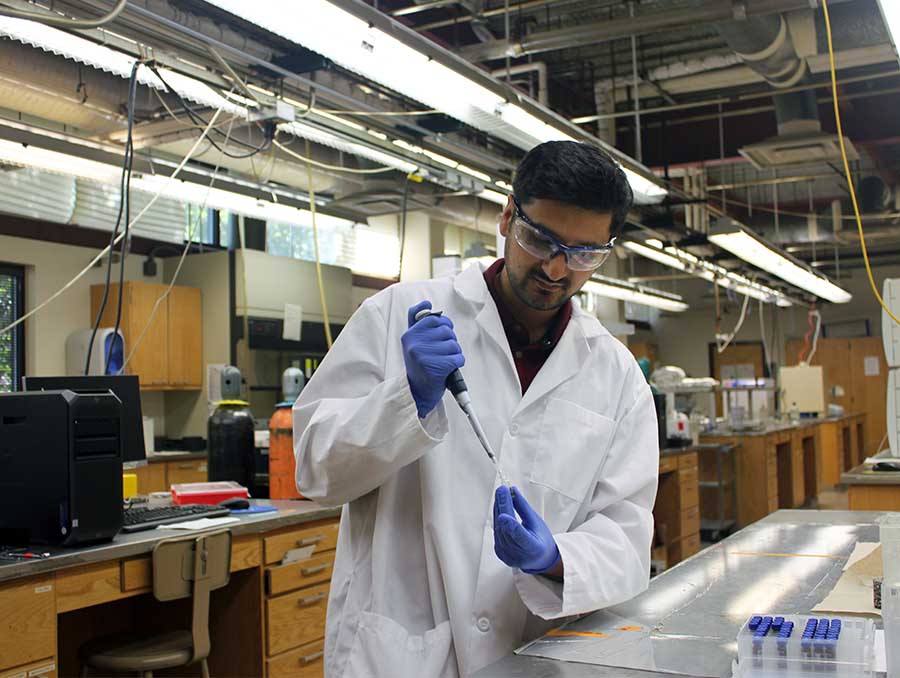A new way to evaluate quinones — a class of compounds found in natural materials such as soil, water, wildfire ashes — is proposed in a research paper by Engineering grad student Anil Timilsina, Environmental Engineering Professor Frank Yang and their team in the August issue of the peer-reviewed journal Analytical Chemistry.
Quinones are ubiquitous in natural soil and aqueous environments and play an important role in regulating the environmental processes and biogeochemical cycles of critical elements under climate change, including the influences of extreme events such as wildfires. But, as the research paper points out, there were no existing methods to quantify natural quinones in complex environmental media.
Until Timilsina and team proposed one.
The quantification method, which involves chemical tagging of quinones, is described in the paper, “Quantification of Quinones in Environmental Media by Chemical Tagging with Cysteine-Containing Peptides Coupled to Size Exclusionary Separation.” The paper was generated from a National Science Foundation (NSF) Environmental Chemical Science-founded project.
“The development of a method to measure quinones in complex environmental samples is an important step in better understanding the role these compounds play in nutrient cycling and wastewater treatment,” said Dr. Maggie Capooci, a program director in NSF’s Division of Chemistry, which supported the research. “In particular, this method could lead to greater understanding of how natural processes respond to climate change.”
Quantification method can broaden understanding of climate change
This quantification method opens up new avenues for studying environmental transformation and the remediation of contaminants, researchers assert in the paper. Analysis of quinones can help us predict the impact of climate change, including wildfires, on carbon cycles, especially those important redox reactions. Wildfires are supposed to generate a lot of ashes, which can contain high content of quinones, crucial for the impact of wildfire on the post-fire carbon stability, nutrition mobilization and protection of water quality in watersheds impacted by wildfires.
“Anil has been working very hard and is really productive,” Yang said. “He has developed a unique method for tagging and quantifying total quinones in complex environmental media.”
Also contributing to the paper: Srinidhi Lokesh, currently a postdoctoral researcher at Colorado State University; and University Ph.D. students Abrar Shahriar and Travel Numan.
Yang and Timilsina now are working on additional papers on the identification of quinones using the new tagging method as well as advanced metabolomics.
This work aligns with one of the College’s main research pillars: engineering and designing equitable community infrastructure to mitigate cascading local, regional and global hazards, including wildfires, water issues and earthquakes.















